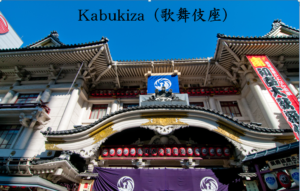 Kabuki(歌舞伎)
Kabuki(歌舞伎)
One of the traditional performing arts in theater unique to Japan.
Around 1600 AD Kabuki started playing on a stage without a roof for common people.
Unlike European opera and concerts brought up under the protection of the royal aristocrats and the merchant, Kabuki was originally a popular play for the commoners.
However, now Kabuki is the top of Japan’s leading cultural entertainment that is appreciated by the world.
Important Intangible Cultural Asset (Designated by UNESCO April 20, 1965).
Kabuki(歌舞伎) is a classical Japanese dance-drama. Kabuki theatre is known for the stylization of its drama and for the elaborate make-up worn by some of its performers. The individual kanji, from left to right, mean sing (歌), dance (舞), and skill (伎). Kabuki is therefore sometimes translated as “the art of singing and dancing”.
Source: Wikipedia
Some Kabuki acting styles are truly unique and can be seen in no other art form! For example, the colourful lines of makeup on the actors’ faces and bodies, the grand poses, larger than life movements, as well as the shrill screams you sometimes hear are all thrilling in their impact! These are typical of the style called aragoto, ‘wild stuff’, used occasionally for masculine heroes.
Source: Kabuki SHOCHIKU
https://www.kabukiweb.net/about/more/broad_range_of_acting_styles.html

